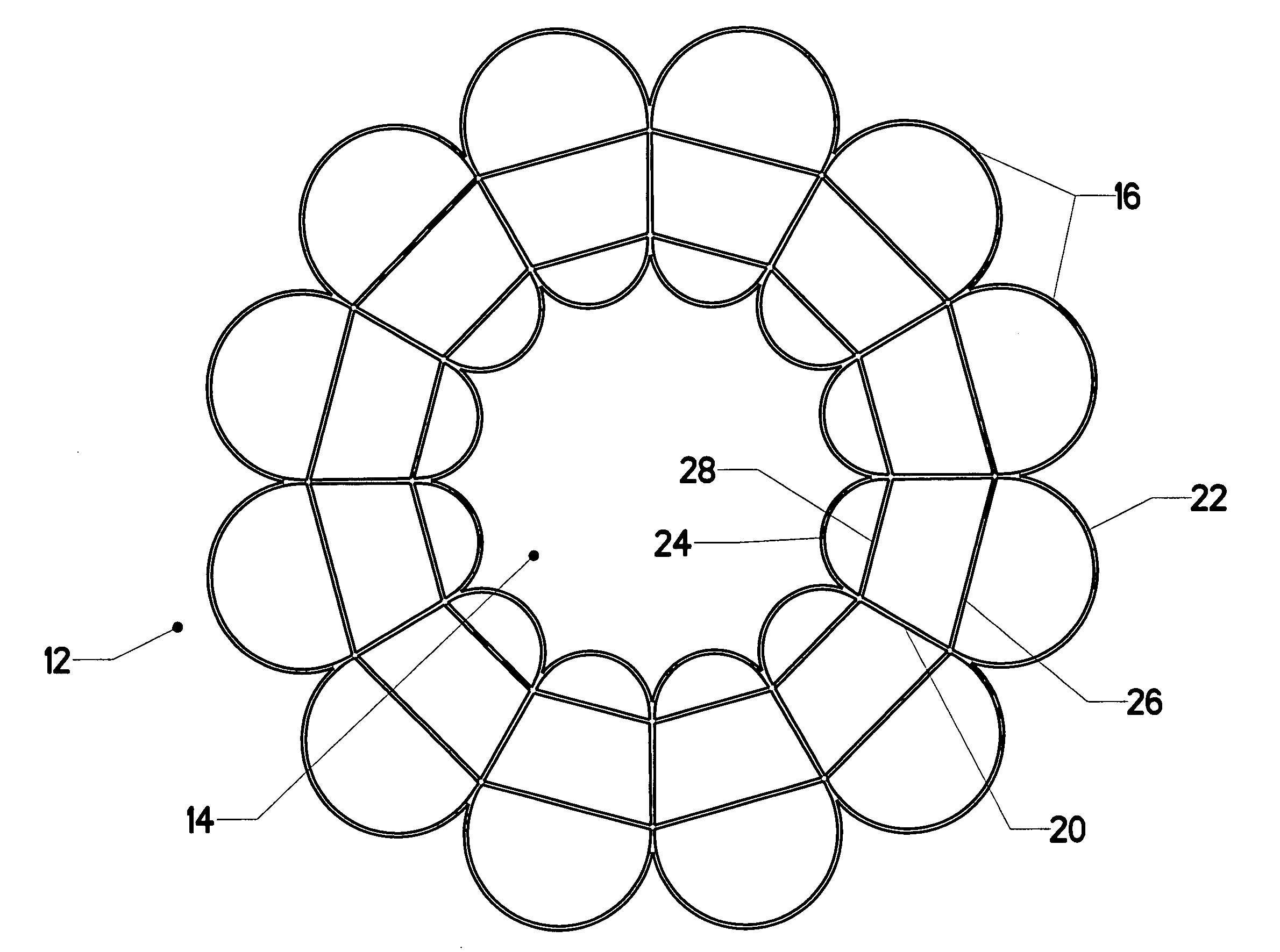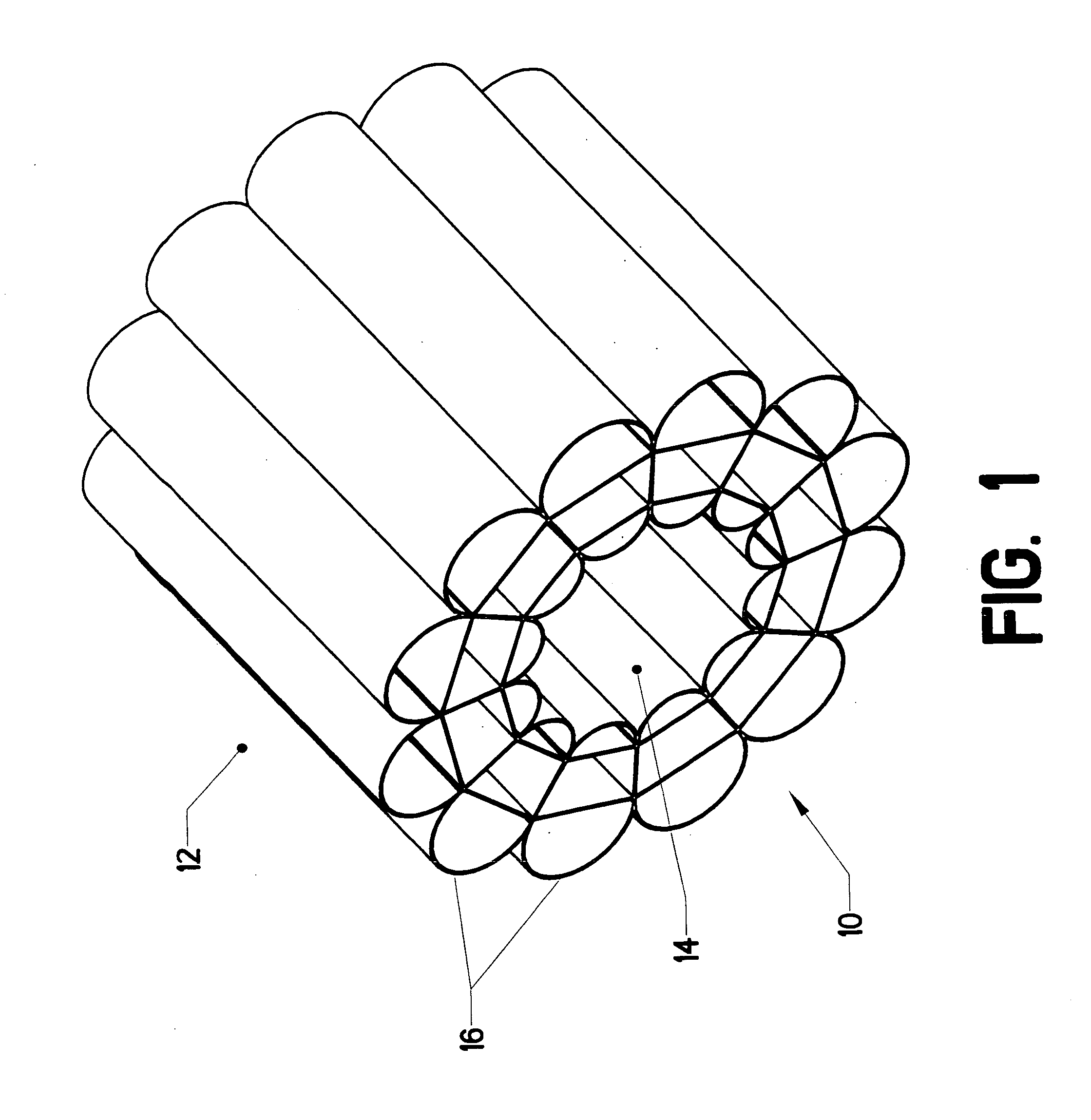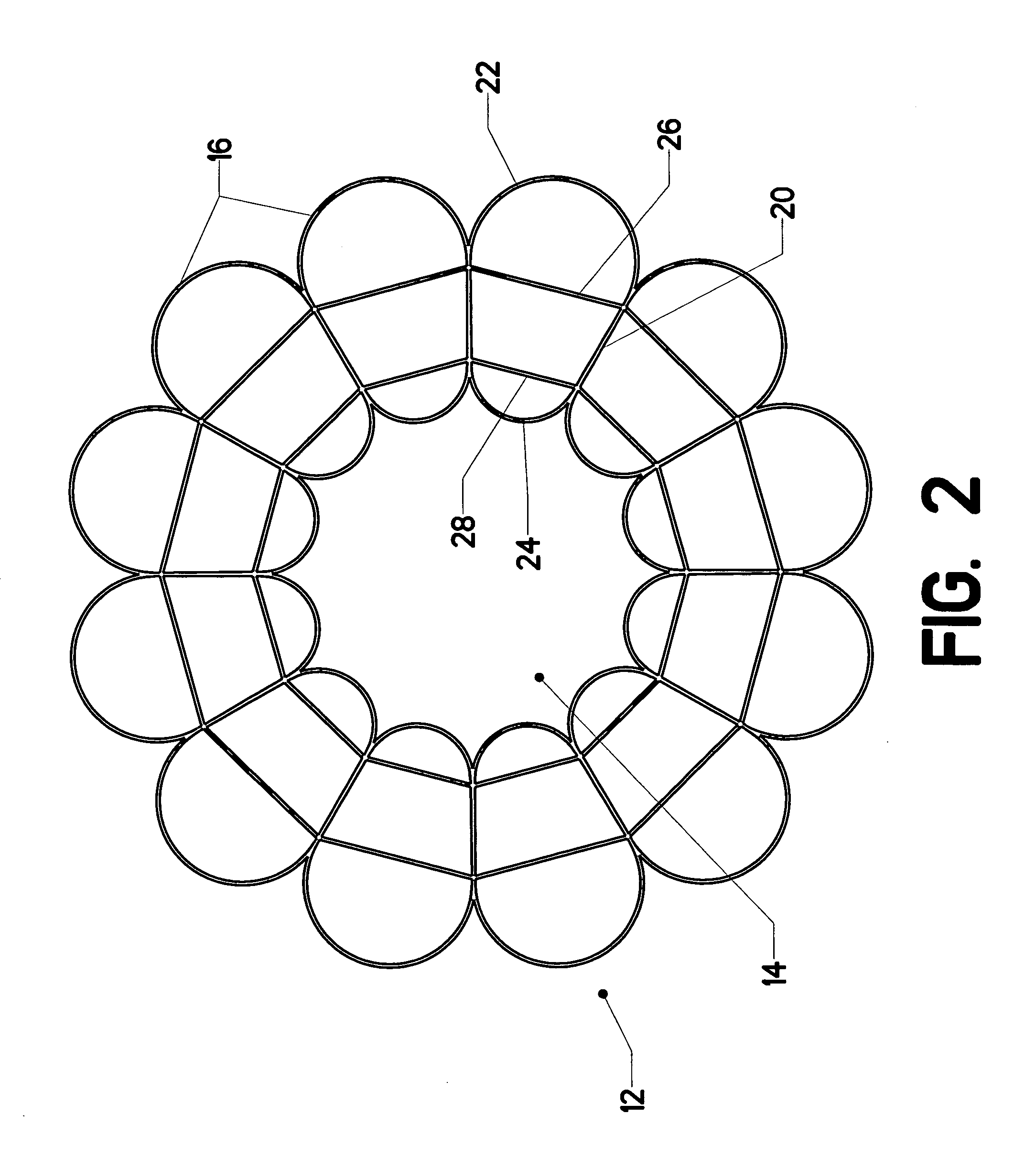Light-weight vacuum chamber and appalications thereof
a vacuum chamber and light-weight technology, applied in the field of vacuum chambers, can solve the problems of high weight in such an environment, buckling instability of traditional vacuum chambers, and heavy design, and achieve the effect of reducing the potential modes of buckling instability and lighter vessels
- Summary
- Abstract
- Description
- Claims
- Application Information
AI Technical Summary
Benefits of technology
Problems solved by technology
Method used
Image
Examples
Embodiment Construction
[0100]The basic structure of the lightweight vacuum chamber will be described, followed by an explanation of the theoretical principles underlying its construction. Possible applications for the chamber will then be disclosed.
[0101]FIG. 1 shows vacuum chamber 10. Its “wall” is defined by a radial array of joined cells 16. These cells separate contained volume 14 from the surrounding atmosphere 12. The view shows only a portion of a complete chamber. Obviously, the open ends must be capped off in order to create a vacuum within contained volume 14. The cells in this example are linear, meaning that they have a fixed cross section projected in a direction which is parallel to the central access of the vacuum chamber.
[0102]FIG. 2 is an elevation view of the same structure. Each cell 16 is defined by an enclosing cell wall. This cell wall can be divided into several distinct portions. These are: outer arcuate portion 22, inner arcuate portion 24, and two linear conjoined portions 20 (on...
PUM
| Property | Measurement | Unit |
|---|---|---|
| Pressure | aaaaa | aaaaa |
| Pressure | aaaaa | aaaaa |
| Pressure | aaaaa | aaaaa |
Abstract
Description
Claims
Application Information
 Login to View More
Login to View More - R&D
- Intellectual Property
- Life Sciences
- Materials
- Tech Scout
- Unparalleled Data Quality
- Higher Quality Content
- 60% Fewer Hallucinations
Browse by: Latest US Patents, China's latest patents, Technical Efficacy Thesaurus, Application Domain, Technology Topic, Popular Technical Reports.
© 2025 PatSnap. All rights reserved.Legal|Privacy policy|Modern Slavery Act Transparency Statement|Sitemap|About US| Contact US: help@patsnap.com



